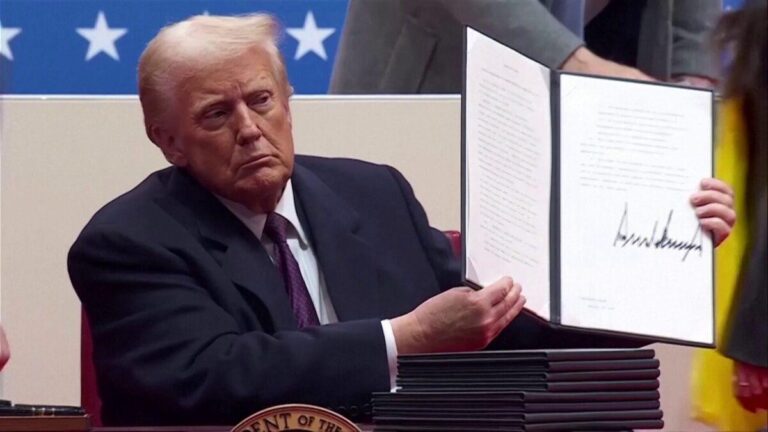The Trump administration is reportedly preparing to reduce the number of refugees admitted to the United States to a historic low, according to sources familiar with the matter.This move would mark a significant shift in U.S. immigration policy, further tightening restrictions on refugee admissions amid ongoing debates over national security and humanitarian obligations. The planned cuts come as the administration faces criticism from advocacy groups and lawmakers concerned about the country’s obligation to offer safe haven to those fleeing persecution.
Trump Administration Proposes Historic Reduction in Refugee Admissions
The latest proposal from the Trump administration outlines a dramatic cut in the number of refugees admitted to the United States, setting a historically low ceiling for fiscal year admissions. Officials argue that the reduction aligns with national security concerns and a broader strategy to overhaul the immigration system. This move marks a significant shift from previous years, reflecting a more restrictive approach to humanitarian intake.
Key aspects of the policy include:
- Cap set at 18,000 refugees,the lowest as the U.S. refugee program’s inception.
- Prioritization of admissions for refugees from designated regions deemed most aligned with U.S. interests.
- Enhanced vetting procedures, increasing scrutiny on applicants’ backgrounds.
| Year | Refugee Admissions |
|---|---|
| 2016 | 84,995 |
| 2017 | 53,716 |
| 2020 (Proposed) | 18,000 |
Implications for International Humanitarian Commitments and U.S. Immigration Policy
The proposed reduction in refugee admissions signals a significant shift in U.S. commitments to international humanitarian standards. By slashing the cap to historic lows, the administration not only challenges the country’s longstanding role as a global refuge but also puts pressure on allied nations to absorb a greater share of those fleeing persecution. This retrenchment could exacerbate humanitarian crises in regions already struggling with instability, as fewer safe pathways are available for vulnerable populations.
Critics argue that the move undermines international agreements designed to protect refugees and contradicts the spirit of the 1951 Refugee Convention, which the U.S. helped to establish. The potential ripple effects include strained diplomatic relations and increased skepticism from global partners about America’s reliability in upholding shared humanitarian values.
Domestically,these changes signal a securitized approach to immigration policy,favoring stringent entry restrictions over humanitarian considerations. The plan reflects an administration stance that prioritizes national security but raises concerns about the U.S. as a beacon for displaced populations.
Key domestic implications include:
- Decreased diversity in immigrant populations, affecting community enrichment and economic contributions.
- Increased backlog and procedural delays owing to stricter vetting and decreased quotas.
- Heightened challenges for resettlement agencies and nonprofits who facilitate refugee integration.
- Possible rise in unauthorized migration due to lack of legal avenues for asylum seekers.
| Year | Refugee Cap | Actual Admissions |
|---|---|---|
| 2016 | 85,000 | 84,995 |
| 2019 | 30,000 | 30,000 |
| 2020 (Proposed) | 18,000 | – |
Reactions from Advocacy Groups and Political Leaders
Advocacy groups swiftly condemned the proposed reduction, labeling it a humanitarian setback. Organizations such as the Refugee Council and Global Aid Network issued statements highlighting the potential increase in suffering for vulnerable populations. They warn that cutting refugee admissions to historic lows will compound crises for displaced individuals already facing dire conditions in camps and conflict zones. “This planned policy shift represents a harsh betrayal of America’s long-standing commitment to refuge and protection,” said Maria Gonzalez, director of the Refugee Council.
- Human rights concerns: Advocacy groups fear the move will reject asylum seekers fleeing violence and persecution.
- International reputation: Many warn that the United States risks damage to its global standing as a welcoming nation.
- Political opposition: Several Democratic leaders and moderate Republicans have voiced resistance to the cuts, calling for a more balanced approach.
On the political front, reactions were sharply divided. While some Republican leaders expressed support for stricter immigration controls, advocating the move as necessary for national security, prominent Democrats decried the policy as un-American. Senator Elaine Matthews stated, “This is an administration turning its back on the very values that define us. Refugee protection is not a partisan issue; it’s a moral imperative.”
| Party | Stance on Refugee Cuts | Key Quotes |
|---|---|---|
| Republicans | Generally supportive | “Protecting borders is paramount.” – Senator J. Reynolds |
| Democrats | Strongly opposed | “A step backwards on human rights.” – Senator E. Matthews |
| Advocacy Groups | Condemning | “Endangers vulnerable families worldwide.” – Refugee Council |
Policy Recommendations to Address Refugee Settlement Challenges
To effectively confront the challenges faced by refugee settlements under reduced admissions,policymakers must prioritize sustainable integration strategies. Expanded community partnership programs can foster social cohesion and provide essential resources, helping refugees navigate housing, employment, and education systems. Additionally, allocating increased funding for local governments and nonprofit organizations will support the creation of specialized services, such as language training and mental health counseling, tailored to diverse refugee populations.
Another critical element is the advancement of data-driven frameworks to monitor settlement outcomes and identify gaps in service delivery.Implementing coordinated case management systems will enhance inter-agency dialog and reduce redundancy. The table below summarizes key policy interventions that could mitigate settlement difficulties effectively:
| Policy Focus | Target Outcome | Implementation Strategy |
|---|---|---|
| Community Partnerships | Improved Social Integration | Collaborate with local NGOs and faith groups |
| Resource Allocation | Enhanced Support Services | Increase federal and state grants |
| Data-Driven Monitoring | Efficient Resource Deployment | Establish centralized reporting systems |
| Case Management | Streamlined Assistance Delivery | Implement multi-agency coordination platforms |
Final Thoughts
As the Trump administration moves forward with plans to reduce refugee admissions to historically low levels,the policy shift marks a significant change in the United States’ long-standing role as a leading destination for displaced individuals. Critics argue that these cuts could have profound humanitarian implications, while supporters contend the measures are necessary for national security and resource management.The coming months will reveal how these changes reshape the country’s refugee resettlement landscape and impact vulnerable populations seeking safety on American soil.




